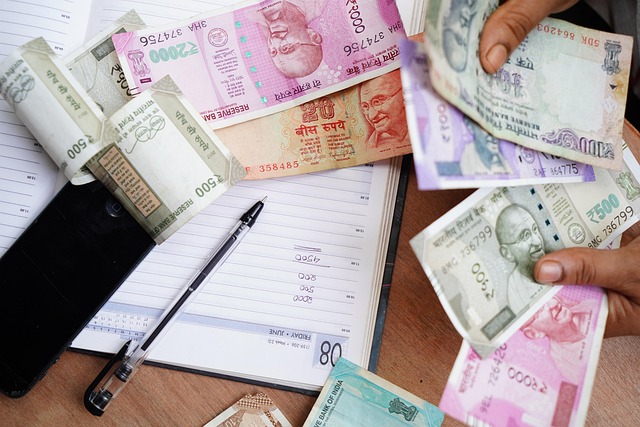Planning a study abroad program involves understanding and preparing specific documents, such as passports, visa applications, academic transcripts, and proof of financial support, with potential language proficiency tests. Institutions provide guidelines on their websites. Document preparation requires professional translation and authentication for accuracy and international recognition to meet program deadlines, ensuring a smoother application process. Meticulous organization and early starting are key to navigating this process successfully.
Embarking on a study abroad or exchange program is an exciting step, but navigating the document requirements can be daunting. This comprehensive guide helps you understand and submit your essential documents seamlessly. From deciphering language barriers to authenticating translations, we provide insights into translating and organizing your paperwork. We’ll walk you through gathering crucial supporting materials and offer tips for a successful submission process, ensuring a smooth transition to your international academic journey.
- Understanding Document Requirements for Study Abroad
- Translating and Authenticating Documents
- Gathering Essential Supporting Materials
- Submitting Documents: Tips for Success
Understanding Document Requirements for Study Abroad
When planning a study abroad or exchange program, understanding the document requirements is a crucial step. Different countries have varying regulations and expectations for international students, so it’s essential to familiarize yourself with the specific needs of your destination. The most common documents include passports, visa applications, academic transcripts, and proof of financial support. These are often just the beginning; some programs may also require language proficiency test scores, such as TOEFL or IELTS, especially if English is not the primary language of instruction.
Knowing what to expect beforehand allows for a smoother application process. Many institutions provide clear guidelines on their websites, detailing which documents are necessary and how they should be submitted. It’s important to start gathering these documents well in advance to avoid last-minute stress. For instance, visa applications can take time to process, and some countries have specific deadlines for various stages of the study abroad or exchange program application process. Therefore, ensuring your Study Abroad or Exchange Program Documents are ready on time is vital to securing your place and beginning your international educational journey.
Translating and Authenticating Documents
When preparing your study abroad or exchange program documents, translating and authenticating them is a crucial step. Many countries require official translations to ensure the accuracy and integrity of your academic records. It’s essential to trust qualified translators who are proficient in both languages to avoid any misinterpretations. This process guarantees that your documents meet international standards and are readily accepted by foreign institutions or authorities.
For authentication, various methods can be employed, depending on the destination country’s requirements. Common practices include notarizing the translated documents or seeking endorsement from authorized bodies back home. These steps add a layer of verification, making your study abroad or exchange program documents more reliable and trustworthy. Remember that clear communication with the receiving institution is key to understanding their specific needs regarding translated and authenticated papers.
Gathering Essential Supporting Materials
When preparing to submit your study abroad or exchange program documents, gathering essential supporting materials is a crucial step. This process involves collecting various certificates, transcripts, language proficiency scores, and sometimes even personal statements or reference letters. It’s important to ensure that all these Study Abroad or Exchange Program Documents are accurate, up-to-date, and translated into the required languages if necessary.
Starting early allows you to meticulously organize these documents, ensuring they meet the specific requirements of your chosen program. Double-check application guidelines for what’s needed, as different institutions may have varying expectations for Study Abroad or Exchange Program Documents. This includes verifying that all materials are official, sealed, and come directly from the issuing institutions. Properly preparing these documents significantly increases your chances of a smooth application process.
Submitting Documents: Tips for Success
Submitting your study abroad or exchange program documents can seem daunting, especially when navigating different languages and formats. The key to success is thoroughness and organization. Begin by ensuring all required documents are gathered; this may include academic transcripts, language proficiency test scores, letters of acceptance, and passport copies. Create a checklist to stay on track and double-check that each item is included and correctly translated if necessary.
When translating documents, opt for professional services or certified translators to maintain accuracy. Different countries have specific requirements, so familiarize yourself with the expectations of your destination. Organize your files digitally and keep backup copies in case of any issues. Lastly, allow ample time for processing; some translations may take weeks, so plan accordingly to avoid last-minute stress.
Submitting your study abroad or exchange program documents is a crucial step in your international educational journey. By understanding the language requirements, translating and authenticating essential papers, and gathering all necessary supporting materials, you’ll ensure a smooth process. Remember to follow submission tips for success, as these steps will facilitate your transition to a new academic environment. Embrace the opportunity to navigate diverse cultural landscapes and expand your global network through this significant experience.



